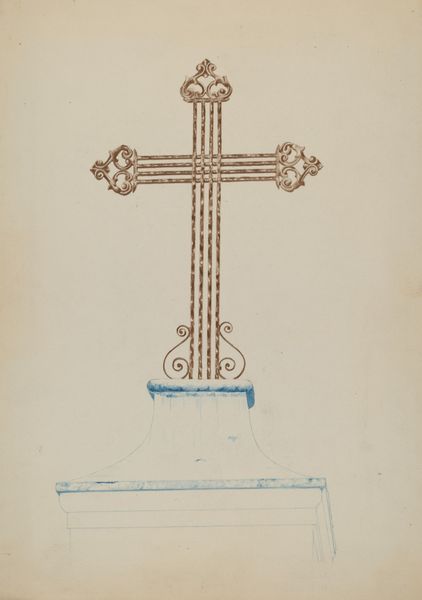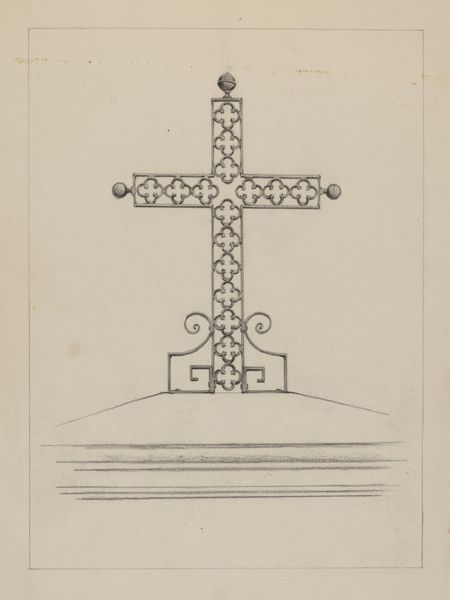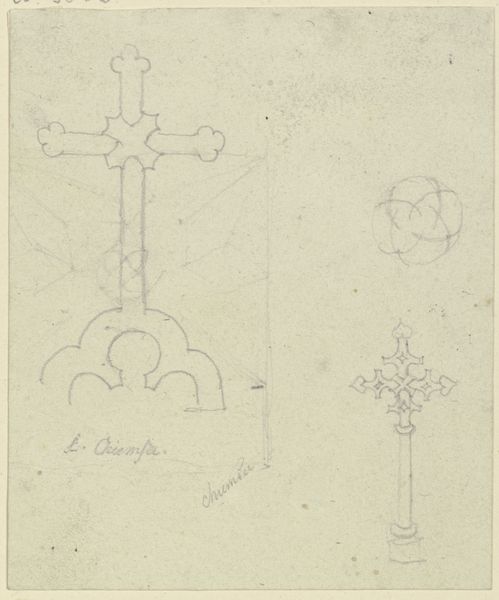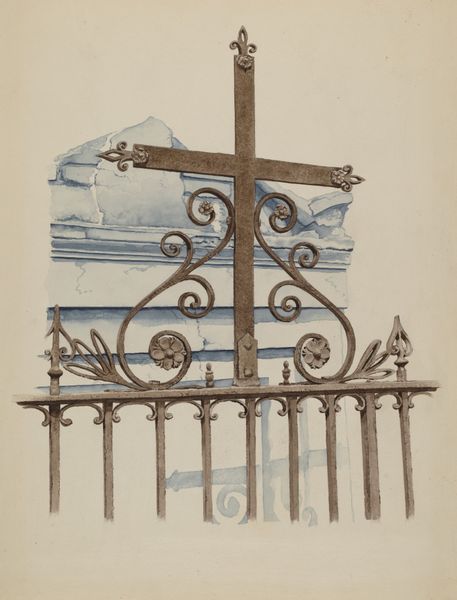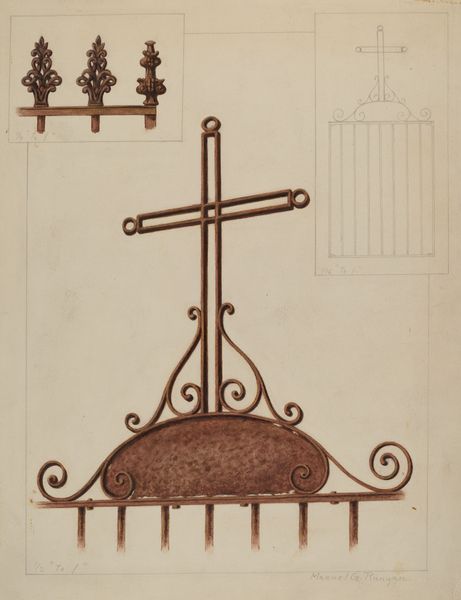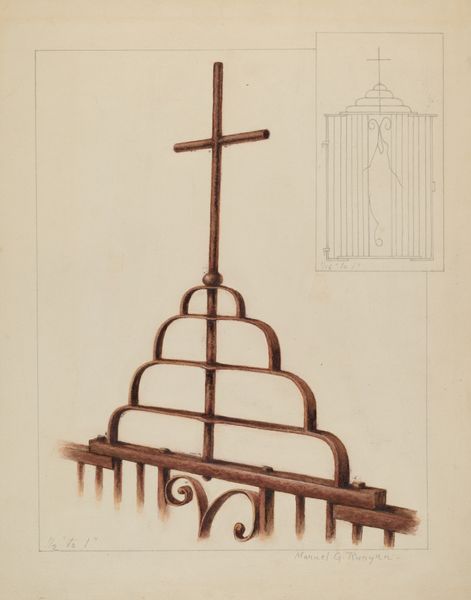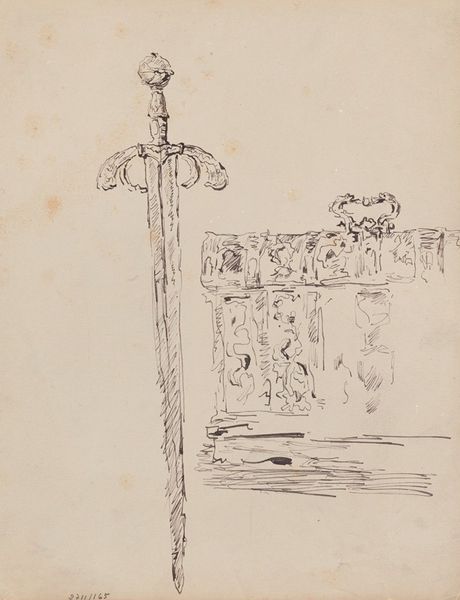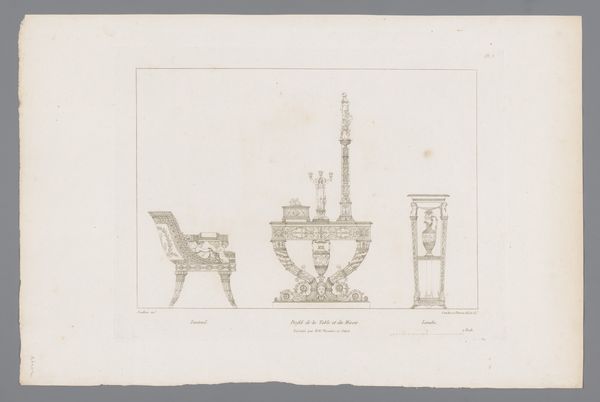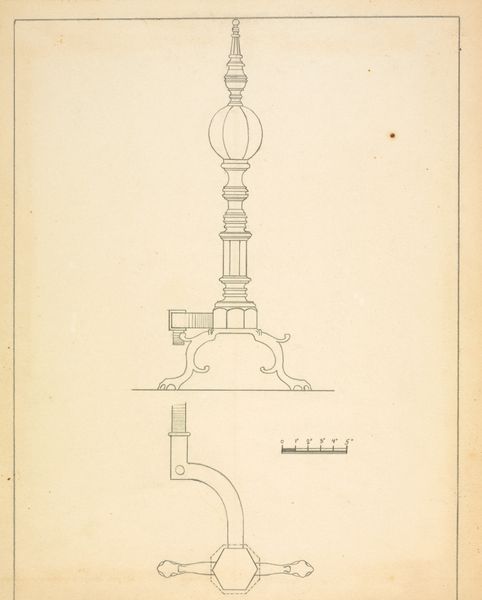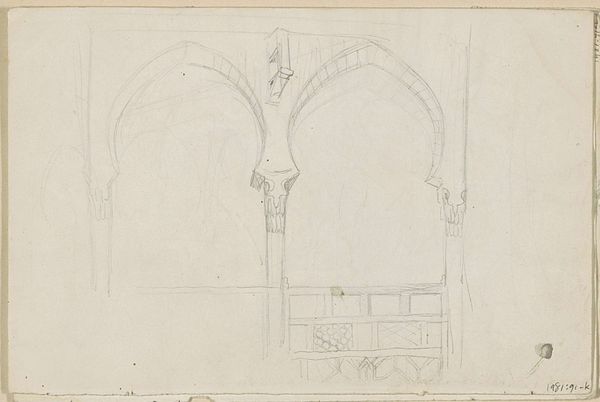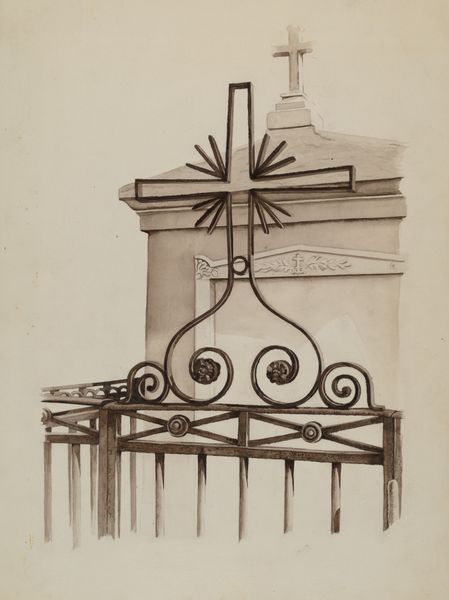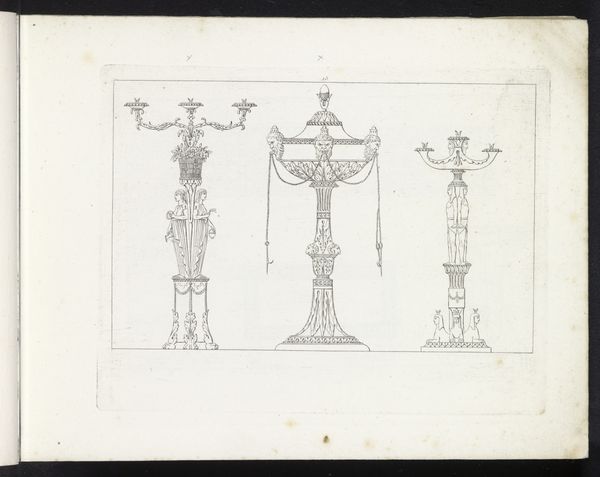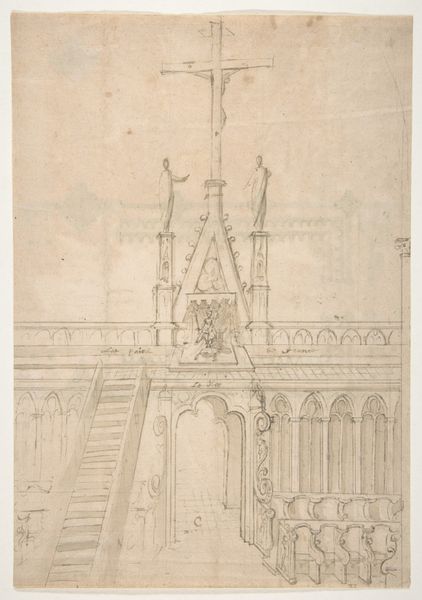
drawing, metal, watercolor
#
drawing
#
metal
#
landscape
#
etching
#
watercolor
#
geometric
#
watercolor
Dimensions: overall: 41.8 x 32.2 cm (16 7/16 x 12 11/16 in.)
Copyright: National Gallery of Art: CC0 1.0
Curator: Looking at this "Wrought Iron Cross," estimated to be from 1936, the artist has rendered an interesting perspective with watercolors, ink, and graphite. The cross itself, rather ornate, stands atop what looks like a stepped stone base. Editor: Oh, it has such a wonderfully muted, somber air about it, doesn’t it? Like a half-remembered dream shimmering in greys. It's less a statement of faith and more of a ghost story, a whisper in iron. And that surrounding landscape feels like it’s holding its breath. Curator: I think the use of media here invites that effect. It's on paper, giving a sense of lightness and impermanence—but then rendered to depict metal, so it presents that striking contrast. I'm curious how it situates within artistic trends. How do you interpret this depiction historically? Editor: Well, consider that this work was created during the Depression era. We're dealing with an economic crisis which really challenged social structures. Artists looked to symbols, familiar shapes that might signify hope but also remember suffering. Public art takes on this weight, doesn't it? It both consoles and compels memory. I imagine that quiet backdrop represents an affected community. Curator: True, I can imagine then it provided both visual solidity in uncertain times. And also the wrought iron is quite beautiful in its embellishments, softening a form loaded with history. Those curving feet, are they a reaching or an embrace? Editor: Precisely! It is ornate, but it is grounded and, despite its stillness, invites questions. The duplication of its design nearby reinforces that idea as though we’re seeing different layers to something. Curator: So as we reflect on it, is there anything in particular that this drawing reveals? Editor: To me it is the paradox, simultaneously fragile and imposing. It encourages us to confront hardship, not just to endure. How does the combination of the delicate materials with something enduring hit you? Curator: Exactly, its ability to capture resilience despite adversity, so gently depicted. The artist almost makes the medium invisible allowing us to see the essence behind its familiar image. And on the personal side, to let us remember what is truly important in front of change. It's a beautiful thing.
Comments
No comments
Be the first to comment and join the conversation on the ultimate creative platform.
